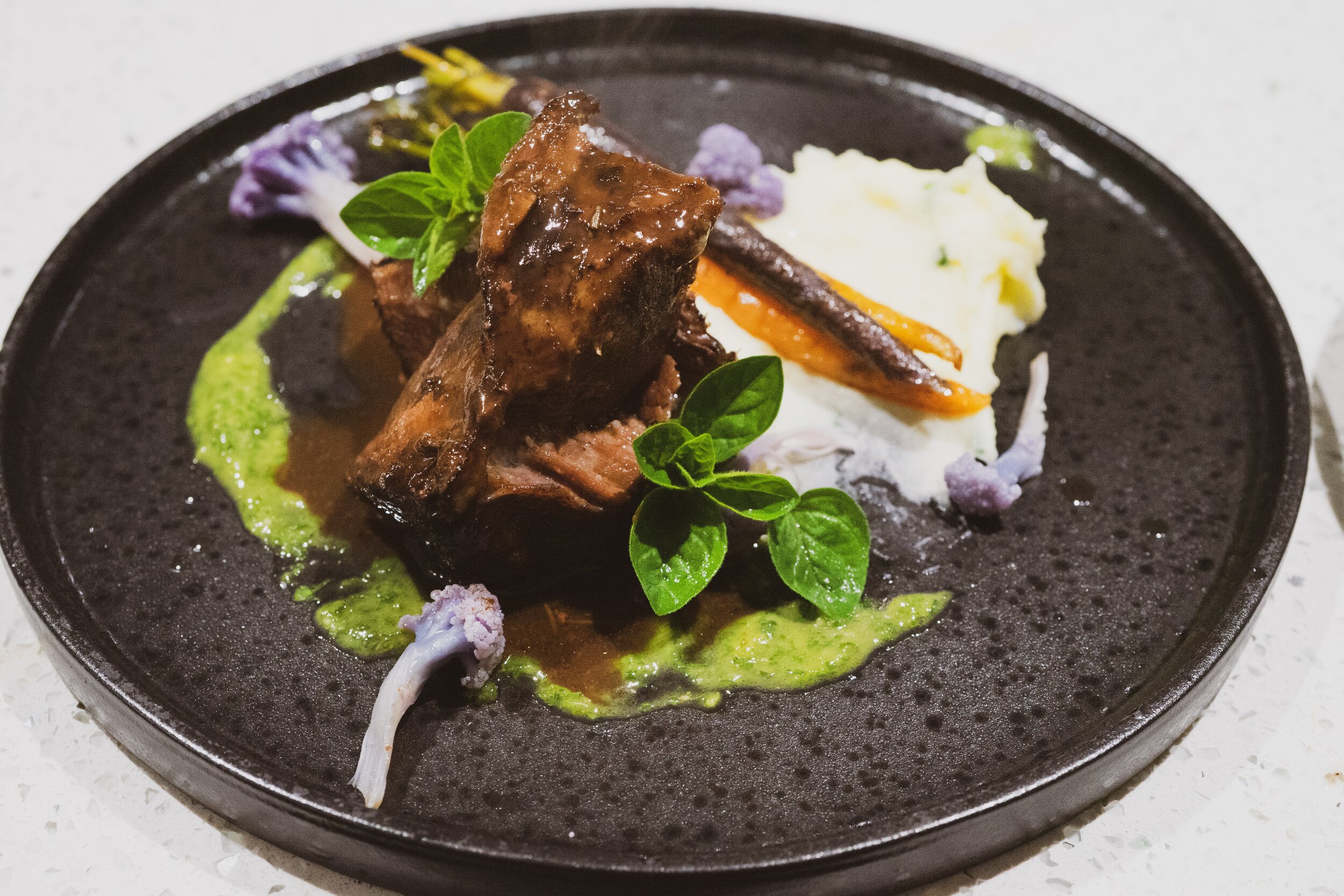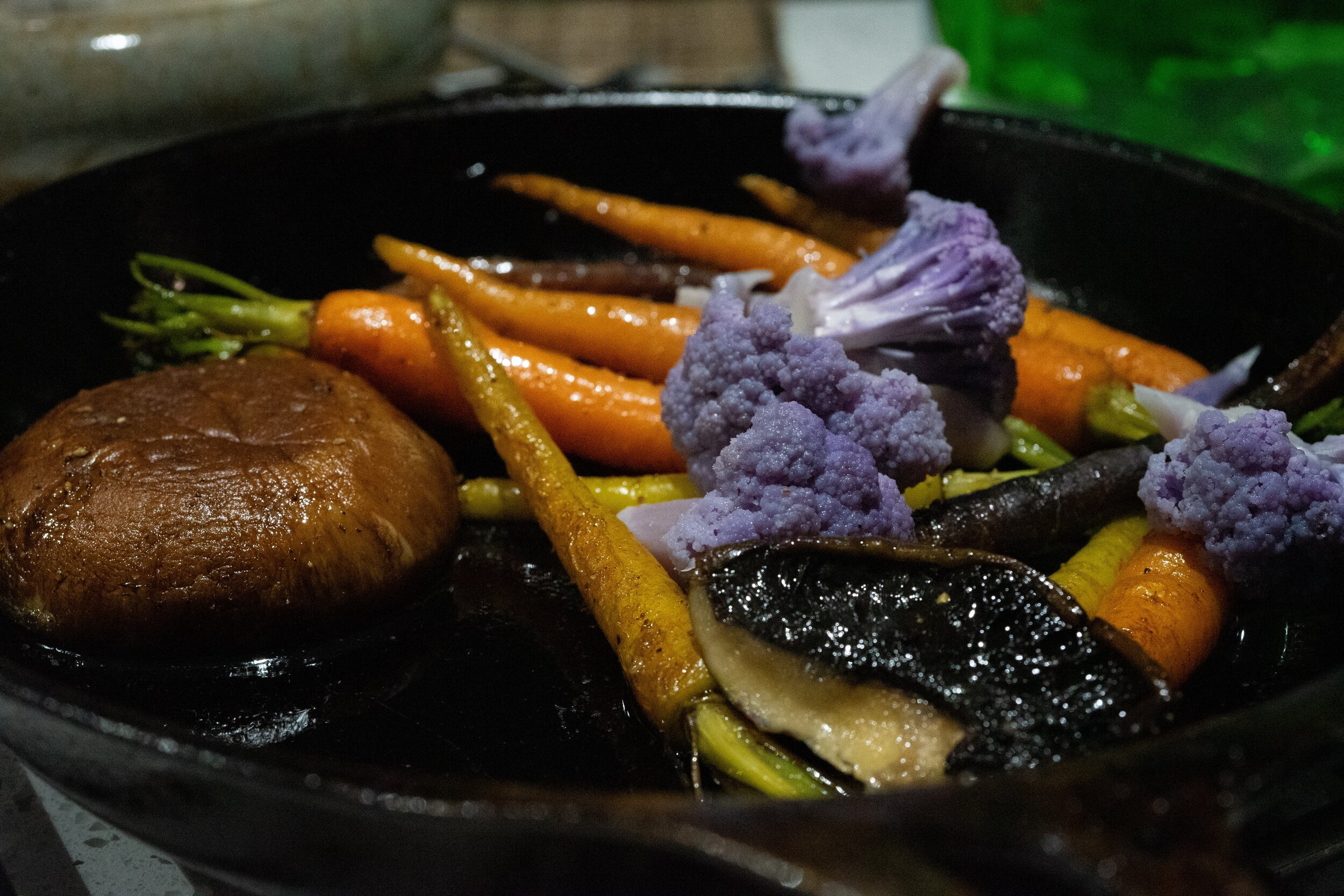What makes a meal deliverable? Adapting for the home delivery market
With the latest round of lockdowns having once again restricted many foodservice businesses to home delivery, Foodservice Rep looks at what makes a meal deliverable - and what changes have to be made in adapting the menu from food served on premises to meals prepared in advance for delivery and consumption offsite.
We sought the advice of four leading chefs – Peter Wright, Adam Moore, Paul Rifkin and Markus Werner – and asked them to provide an example of a recipe which had been adapted for home delivery.
Choose your ingredients carefully
Peter Wright says a good starting point in planning food for home delivery is to go back to the ‘classic’ approach: “Pizza was the go-to home delivery meal for a long time, and it’s the perfect choice because it comes out of a 220 to 250 degree oven, it’s quickly cut into slices and put into a box which conducts heat and incubates the product. The dough is baked, the melted cheese on top holds the toppings in place and everything stays hot for quite a while. But even pizza that’s cooled down is still pleasant to eat.
“So if you take that as your premise, it gives you an insight into how to approach home delivery: not all ingredients and meals will travel well. With burgers, for example, you’re adding hot ingredients to cold ones and loading them into a toasted bun, but there’s nothing to conduct heat – instead the heat is being dispersed so it will get cold quickly. I’ve never been able to create a home delivery burger that resembles anything you’d serve to dine in.
“Pasta, on the other hand, travels well, as do many Asian dishes – stir fries and curries can typically be quickly packaged up with the heat locked in, and in most cases you’re putting another container on top which might have hot rice or roti bread or curry, so the whole package is incubating and staying hot. So wet dishes, pastas, rice dishes and baked dishes all deliver well.”
Peter advises: “You still need to need make sure the meal will work – therefore it’s important not to use food which can be easily overcooked. Instead you want to concentrate on meals like stews or curries which can be cooked for longer periods and will still retain their integrity. You should also test how long the meal is going to stay hot and trial different types of packaging.
But with lockdowns having pushed many foodservice businesses into the delivery channel, not every meal is going to conform to the above – hence the growing move to provide home delivered meals which need to be finished by the customer, with instruction cards provided with the food. “This is quite an innovation, in that it’s bringing high quality dining into the home, which is 90 per cent finished,” Peter explains. “Most of high quality restaurant won’t travel well if it’s fully prepared – but now we’re seeing meals priced at $75 per head being delivered into the home, where customers participate to finish the food off. That in itself is a bit of theatre and works well.”
Beef Goulash
Peter Wright
Method
Heat butter in a cast iron pot, add diced beef and fry until lightly colored.
Add the finely diced onion and cook without color 5 mins.
Add the paprika and flour and mix well, place lid on and cook in a hot oven for 10 minutes.
Remove lid, add tomato puree, thyme, bay leaves, salt, pepper and stock to cover meat. Place lid on and cook in a moderate oven for 90 minutes, until meat is very tender.
Garnish with boiled baby potatoes tossed in butter and parsley.
Ingredients
100g butter
1.25kg blade or chuck beef, cut into 2½cm cubes
500g onions, peeled and finely chopped
60g sweet paprika
60g plain flour
60g tomato puree
2 litres veal or chicken stock
10 sprigs thyme, fresh
4 bay leaves
5g cracked black pepper
5g sea salt
20 small potatoes, peeled or turned
50g butter
10g fresh chopped parsley
Separate meal components for the delivery process
Adam Moore advises it’s a good idea to look at how various components of the meal can be separated for the delivery process so as to maintain the overall integrity of the dish when finished at home. “If you’re delivering your meals with finishing instructions, as many restaurants now are, you should look at separating your brussels sprouts, your rice, your curries, your ragout, your mashed potatoes – then the customer can put everything at home and ensure a nice presentation. Otherwise what will happen is that when all these ingredients are put together the food will heat unevenly, especially if it’s being reheated in a microwave.”
“Don’t put oily dishes in carboard boxes. If you put chips in a foil bag or a box with no vents they’ll go soggy because the steam will heat the roof. Make sure you don’t overfill the packaging as that can lead to spoilage”
Adam also says you need to think carefully about packaging: “Don’t put oily dishes in carboard boxes. If you put chips in a foil bag or a box with no vents they’ll go soggy because the steam will heat the roof. Make sure you don’t overfill the packaging as that can lead to spoilage – if you’re using a container for soup you should only fill it three-quarters full; if that doesn’t look big enough then find the container that fits, because with so many different packaging options available you can definitely find the right one.
“In particular, you should keep sauces in separate containers – the chicken might be supposed to be served with chermoula, but if you add that before delivery it will arrive to the customer as a soggy mess. Beef Wellington might be great on the menu but it won’t travel well because the pastry will go soft – so cook it and allow it to cool down completely before packing it up, and give customers an instruction card telling them to wrap it in foil and put it in the oven for 10 minutes. Your jus and potato can go in separate containers in the microwave while the Wellington’s heating in the oven.”
Guinness roasted ribs
Adam Moore
Method
Preheat oven to 160 degrees.
Mix the oil and cornflour and make a slurry or paste. Add the Guinness, coffee, barbecue and Worcestershire sauce and the garlic and ginger and stir till combined.
Salt and pepper both sides of the ribs and place on baking sheet.
Brush both sides of ribs with the Guinness barbecue sauce, place on a rack on a tray and place in oven.
Rotate and turn ribs every 30-45 minutes and brush with more Guinness barbecue sauce until done, 3.5-4 hours.
Let sit 10 minutes, then slice. Serve with corn and coleslaw.
Ingredients
4 racks pork ribs
1 tsp vegetable oil
2 tbsp cornflour
1 can of Guinness
60g instant coffee
180ml barbecue sauce
1 tbsp Worcestershire sauce
3 cloves garlic, finely chopped
2cm ginger, finely chopped
Think smart and include finishing instructions
Paul Rifkin makes the point that you don’t want your customers to be disappointed when their meals arrive because the presentation is not what they were expecting. “So foodservice professionals need to get smarter about the way we approach delivery – instruction cards are great, and maybe also include a photo so the customer can recreate the presentation at home,” Paul advises. “At the end of the day it’s your food that’s being judged and if you want those customers to be happy you need to provide plating instructions that they can follow and that deliver the best possible result.
“The reality is that everything is going to arrive lukewarm at best so you will need to include reheating instructions. I’ve even seen some businesses putting up how-to videos on Youtube – people are becoming very creative in how they are approaching this. Having said that, it’s not always that easy to scale up to home delivery – for the majority of clubs, for example, it’s simply not worth it.
“Having said that, there are of course exceptions – the Yarraville Club in Melbourne has been offering takeaway through Uber Eats for years, and when they had the first lockdown they pivoted to their own delivery service and I think they got up to about 25 per cent of food revenue. So all of a sudden it became a worthwhile effort and now every time there’s a lockdown their posts go out on social media showing what’s available for pickup and delivery. So there is a lot of opportunity out there as long as you’re able to take advantage of it.
“The Sam Prince Group are currently using one restaurant as a central production kitchen to create all the meals for the different menus across their group – admittedly it’s not going to bring in their usual revenue, but it keeps the staff engaged and aligned which is a very important consideration right now. We do have to wonder how many staff will still be left in the industry at the end of this pandemic – a lot of the senior talent has already left, people who were over 40 and thinking about leaving in a couple of years have decided to bring their departure forward.
“This is creating a gap in the top end of the market, but the flipside of that is it presents an opportunity for the younger chefs who are coming up. Time will tell what happens but in some ways this is reminiscent of the early 1990s when a lot of restaurants started closing and people were predicting the end was nigh. But it’s thirty years later and the industry is still here!”
Harissa Cauliflower, Beetroot, Sweet Potato, Fennel and Persian Feta
Paul Rifkin
Harissa Cauliflower Steak
Cut a 3cm slice of cauliflower from the centre, ensure the slice is the circumference, coat with your favourite harissa paste and steam for 10 minutes.
Brush with olive oil and char to colour each side, rest over the char.
Charred Baby Sweet Potato
Slice 1 whole baby sweet potato lengthways, toss with olive oil, cumin spice, sea salt and cracked pepper, char and finish in the oven.
Baked Beetroot
Scrub 2-3 baby beetroots, toss with olive oil, sea salt and pepper, wrap in foil and baked for 45 minutes at 150 C, then skin and quarter.
Fennel and Ginger Confit with Oil
Slice 1 whole fennel into 2cm thickness with 1⁄2 knob of ginger roughly chopped, cook under oil in a 150 C oven for an hour, reserve the ginger oil.
Persian Feta crumble
Sour Cream
Blended with fresh lime juice and coriander stalks, use the leaves for garnish
Arrange the dish, cauliflower steak on the base, fennel, sweet potato and beetroot, crumble Persian feta, dollops the sour cream, drizzle with the ginger oil and garnish with coriander leaves.
The customer has to enjoy the part they play in the process
Markus Werner says it’s important to think about how the food will stand up once the customer reheats it. “The appearance, the colour, the texture and taste need to be what the customer expects, so it’s very important that you focus on all these aspects. Decide which ingredients can be kept on the side so the customer can add them in and have a fresh tasting meal. I recently sent out a four course meal which included clear instructions for when each component had to be added in order to ensure the best overall presentation and taste.
“The other consideration is that the customer has to not only enjoy the meal but also the part they play in the finishing process – you don’t want to make it so complex that it becomes a chore for them. With the multiple course meal I mentioned, the menu was planned so that the main could be put in the oven on 90 degrees at the same time that the entrée is being plated up. So the customer could sit down to the entrée knowing that in 15 or 25 minutes the main course will be ready.
“It’s not as if there’s a chef in the kitchen with them overseeing what they’re doing and making sure the timings are right, so you need to make it all simple enough that the customer can enjoy the meal and not have a stressful night. That means the food can’t be something that has to be prepared to the minute, but rather something which can be plated when the customer is ready and will be right to eat.
“In other words, keep it simple – so the customer can mix those final additions through at the last minute and serve up. It’s also the case that sometimes customers don’t want their guests to know that they’ve ordered in – they’d rather give the impression it’s been made fresh in the kitchen. So that needs to be considered. I think in cases like this we should all bear in mind that it’s not about creating food which showcases the venue, but rather giving the customer a great experience to enjoy at home.”
Braised Gippsland beef cheeks, heirloom carrots, champ potatoes, oregano gremolata
Markus Werner | Recipe for 5
Method
Soak cheeks in red wine and spices for 12 hours.
Dry and seal with mirepoix until nice colouring, add brine and bring to boil. Set aside and bag then sous vide for 24 chours on 64 degrees, then chill.
Braised beef cheeks
500ml red wine
2 sprigs of thyme
1 fresh bay leave
2g peppercorn
1 garlic clove
150g mirepoix chopped
1 tbs tomato paste
Salt to taste
Method
Place all in bag and sous vide for 30 min on 85 degrees.
Heirloom carrots
15 baby carrots
15g butter
3g sugar
Salt & pepper
2g mint
2g parsley
Method
Blend all together and sit aside
Oregano gremolata
1/3 bunch of Italian parsley
1/3 bunch of Oregano
2 garlic cloves
2 anchovy
1 organic lemon zest and juice
40ml extra virgin olive oil
Method
Cook potatoes in salt water until soft, drain water and add all ingredients mix well and chill in sealed container. Plate up.
Take cheeks out of bag and place in oven including juice 30min on 150 decrees.
Take carrots out of bag and add to the oven on 150, decrease for 10min (I added on the picture a grilled mushroom and purple cauliflower).
Heat up chump potatoes for 1.5 min in microwave and rest for 1 min.
Place chump potatoes on plate, add mushroom, top with beef cheek, carrot and grated or small cauliflower rosettes, drizzle with gremolata and beef jus, garnish with oregano leaves.
Chump potatoes
500g potatoes peeled and halved
½ cup of milk
½ bunch spring onion fine chopped
Salt & pepper to taste
1/3 tsp English mustard
20g sour cream (thick)
40g butter












